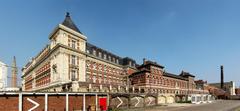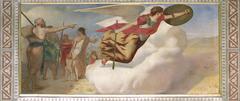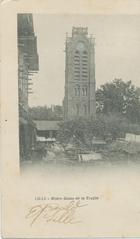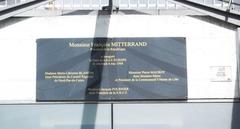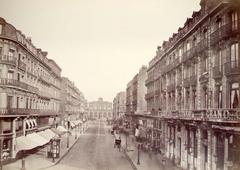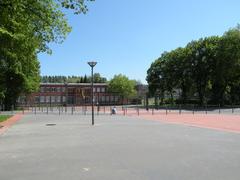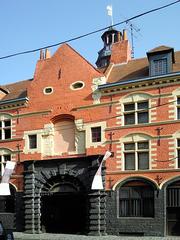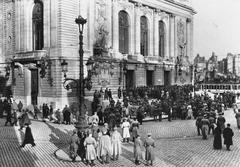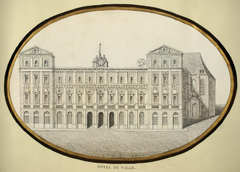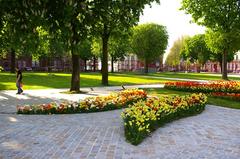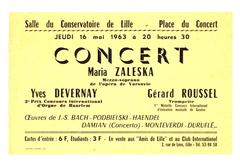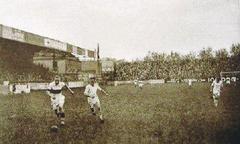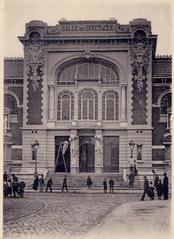Visiting Zoo de Lille: Hours, Tickets, and Tips
Date: 17/07/2024
Introduction
Welcome to a comprehensive guide on visiting Zoo de Lille, a premier attraction nestled in the heart of Lille, France. Established in 1950, Zoo de Lille is not just a zoo but a historical and cultural landmark situated within the larger Citadel Park, designed by the renowned military engineer Vauban in the 17th century. Over the years, it has evolved significantly, expanding its facilities and diversifying its animal collection to align with global standards for animal welfare. Today, Zoo de Lille is home to over 400 animals representing more than 70 species from around the world, making it a must-visit for families, wildlife enthusiasts, and tourists alike.
Zoo de Lille plays a crucial role in wildlife conservation and education. As a member of the European Association of Zoos and Aquaria (EAZA), it participates in various breeding programs for endangered species such as the red panda, snow leopard, and pygmy hippopotamus. The zoo is committed to raising awareness about wildlife conservation and environmental protection through a range of educational programs, including guided tours, interactive exhibits, and workshops for school groups.
This guide aims to provide all the essential information you need for an unforgettable visit to Zoo de Lille. From its rich history and conservation efforts to practical visitor tips and nearby attractions, we’ve got you covered. Whether you’re a local or a tourist, this guide will help you make the most of your visit to this beloved landmark. (source, source)
Table of Contents
- Introduction
- History and Significance of Zoo de Lille
- Visitor Information
- Visitor Experience
- Accessibility and Amenities
- Nearby Attractions
- Recent Developments
- Future Plans
- FAQ
- Conclusion
History and Significance of Zoo de Lille
Origins and Early Development
The Zoo de Lille, located in the heart of Lille, France, has a rich history dating back to its establishment in 1950. Initially conceived as a small animal park, it was part of the larger Citadel Park, which itself is a historical landmark designed by the renowned military engineer Vauban in the 17th century. The zoo was created to provide a recreational space for the residents of Lille and to promote wildlife conservation and education.
Expansion and Modernization
Over the decades, the Zoo de Lille has undergone significant transformations. In the 1980s, the zoo expanded its facilities and diversified its animal collection. This period marked the beginning of a more structured approach to animal care and habitat design, aligning with global standards for animal welfare. The zoo’s modernization efforts included the construction of new enclosures that mimic the natural habitats of the animals, enhancing both the living conditions for the animals and the viewing experience for visitors.
Conservation Efforts
The Zoo de Lille has played a crucial role in wildlife conservation. It is a member of the European Association of Zoos and Aquaria (EAZA), participating in various breeding programs for endangered species. The zoo’s commitment to conservation is evident in its successful breeding programs for species such as the red panda, the snow leopard, and the pygmy hippopotamus. These efforts contribute to the global initiative to preserve biodiversity and protect endangered species from extinction.
Educational Programs
Education is a cornerstone of the Zoo de Lille’s mission. The zoo offers a range of educational programs aimed at raising awareness about wildlife conservation and environmental protection. These programs include guided tours, interactive exhibits, and workshops for school groups. The zoo’s educational initiatives are designed to engage visitors of all ages, fostering a deeper understanding of the natural world and the importance of conservation efforts.
Cultural Significance
The Zoo de Lille holds a special place in the cultural fabric of Lille. It is not just a place for recreation but also a symbol of the city’s commitment to preserving nature and promoting environmental education. The zoo is a popular destination for families, school groups, and tourists, attracting over one million visitors annually. Its location within the historic Citadel Park adds to its cultural significance, making it a key attraction in Lille’s rich historical and cultural landscape.
Visitor Information
Visiting Hours and Ticket Prices
The Zoo de Lille operates with seasonal hours:
- Spring and Summer (April to September): Open daily from 9:00 AM to 6:00 PM.
- Autumn and Winter (October to March): Open daily from 10:00 AM to 5:00 PM.
Admission to the zoo is free, but donations are encouraged to support conservation efforts.
Best Times to Visit
To avoid the crowds and enjoy a more intimate experience with the animals, consider visiting during weekdays or early in the morning. Spring and autumn offer mild weather, making these seasons ideal for a visit.
Visitor Experience
Animal Exhibits
The Zoo de Lille offers a unique and enriching experience for visitors. The zoo is home to over 400 animals representing more than 70 species from around the world. Visitors can explore various themed areas, each designed to replicate the natural habitats of the animals. Highlights include the African Savannah, the Tropical Rainforest, and the Asian Highlands.
Interactive Areas
Beyond the animal exhibits, the zoo features interactive areas such as a petting zoo, a playground, and several picnic areas, making it an ideal destination for families. These interactive zones provide hands-on experiences that delight younger visitors and educate them about wildlife.
Accessibility and Amenities
The Zoo de Lille is easily accessible by public transportation, with several bus and metro lines serving the area. The zoo is also wheelchair accessible, ensuring that all visitors can enjoy the attractions. Amenities include a gift shop, a café, and several restrooms, providing a comfortable and convenient experience for visitors.
Nearby Attractions
While visiting the Zoo de Lille, take the opportunity to explore nearby attractions such as the Citadel of Lille, the Palais des Beaux-Arts, and the bustling Grand Place. These sites offer a blend of historical, cultural, and artistic experiences, enriching your visit to Lille.
Recent Developments
In recent years, the Zoo de Lille has continued to evolve, embracing new technologies and sustainable practices. The zoo has implemented eco-friendly initiatives such as waste reduction programs, renewable energy sources, and sustainable building materials. These efforts reflect the zoo’s commitment to environmental stewardship and its role as a leader in sustainable zoo management.
Future Plans
Looking ahead, the Zoo de Lille has ambitious plans for further development. Future projects include the expansion of existing enclosures, the introduction of new species, and the enhancement of educational and conservation programs. These initiatives aim to strengthen the zoo’s role as a center for wildlife conservation and education, ensuring that it remains a beloved and vital part of Lille’s community for generations to come.
FAQ
1. What are the visiting hours for Zoo de Lille?
- The zoo typically operates from 9:00 AM to 6:00 PM during the summer months, and from 10:00 AM to 5:00 PM in the winter.
2. How much are the tickets for Zoo de Lille?
- Admission to the Zoo de Lille is free, but donations are encouraged to support conservation efforts.
3. How can I get to Zoo de Lille?
- The zoo is easily accessible by public transportation, with several bus and metro lines serving the area.
4. Is the zoo wheelchair accessible?
- Yes, the Zoo de Lille is wheelchair accessible.
5. Are there any nearby attractions to visit?
- Yes, nearby attractions include the Citadel of Lille, the Palais des Beaux-Arts, and the Grand Place.
Conclusion
Zoo de Lille offers a unique blend of historical charm, conservation efforts, and engaging visitor experiences. Whether you’re a local or a tourist, a visit to this zoo promises to be both educational and enjoyable. For more information and updates, visit their official website or follow them on social media.
For more travel tips and guides, explore our other articles and stay inspired for your next adventure.
References
- Exploring Zoo de Lille - Visiting Hours, Tickets, and Historical Significance, 2024, Author https://www.lille.fr/Zoo-de-Lille
- Zoo de Lille - Visitor Tips, Tickets, and Top Attractions, 2024, Author https://www.zoolille.fr
- Zoo de Lille - Visiting Hours, Tickets, and Essential Tips for a Memorable Visit, 2024, Author https://www.lille.fr/Zoo
